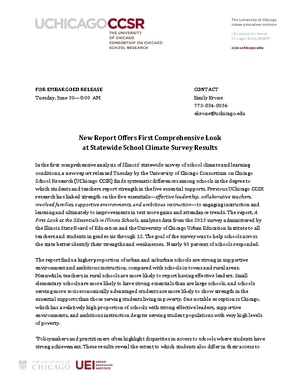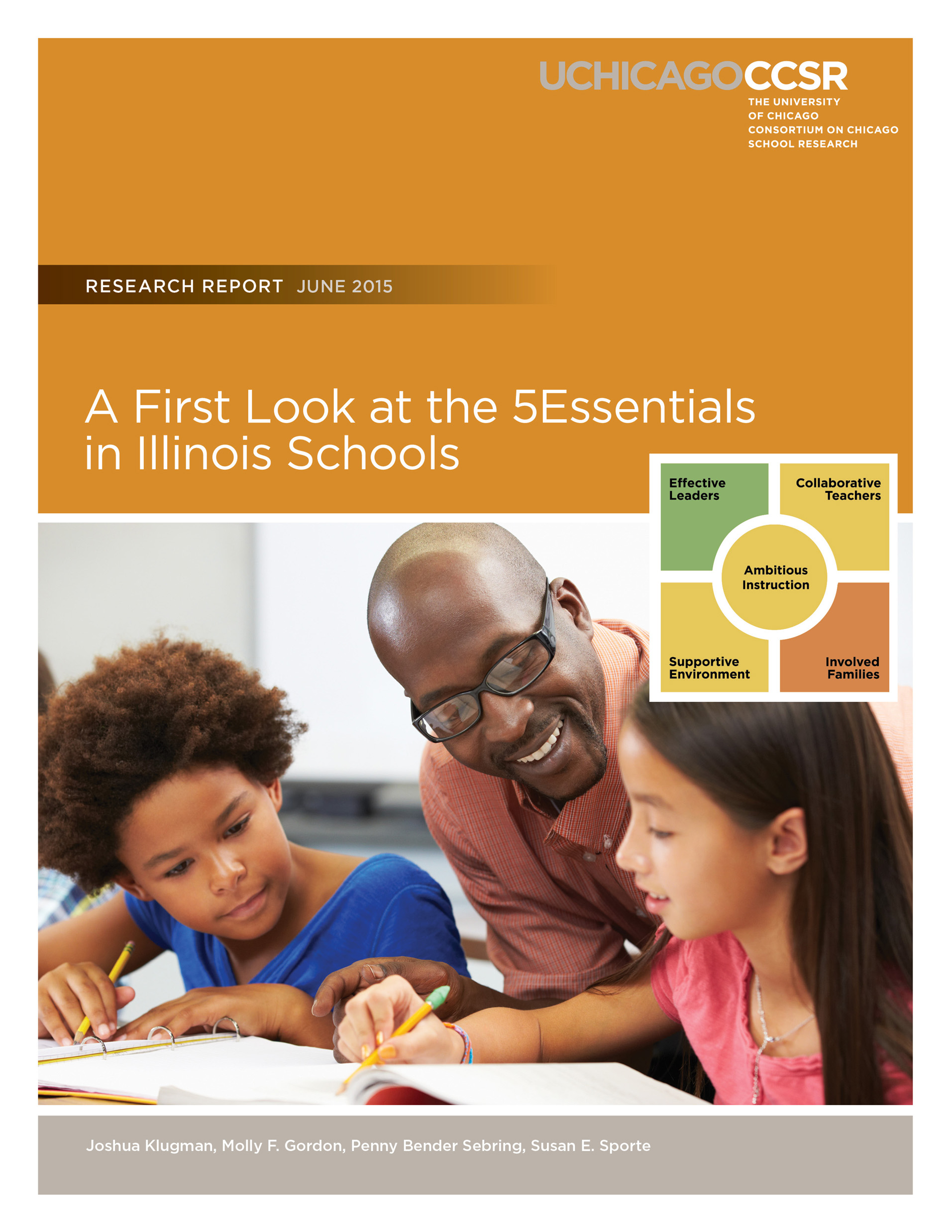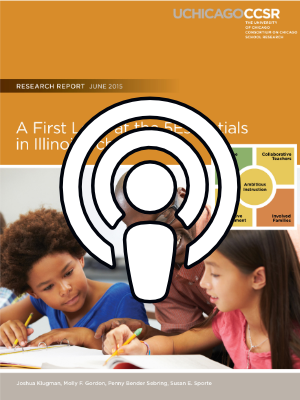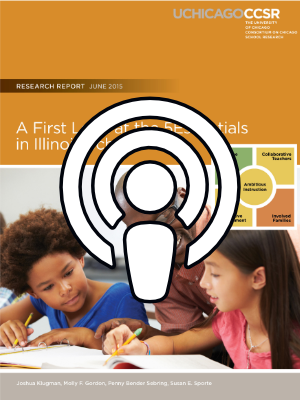1. How does strength and weakness on the five essential supports vary according to urbanicity, size of school, and socioeconomic characteristics of school communities?
2. Are the five essential supports related to student outcomes including attendance rates, test scores, and graduation rates?
In the first comprehensive analysis of Illinois’ statewide survey of school climate and learning conditions, this report finds systematic differences among schools in the degree to which students and teachers report strength in the five essential supports. Previous Consortium research has linked strength on the five essentials—effective leadership, collaborative teachers, involved families, supportive environments, and ambitious instruction—to engaging instruction and learning and ultimately to improvements in test score gains and attendance trends.
This report analyzes data from the 2013 survey administered by the Illinois State Board of Education and the University of Chicago Urban Education Institute to all teachers and students in grades 6-12. The goal of the survey was to help schools across the state better identify their strengths and weaknesses. Nearly 90 percent of schools responded.
The report finds a higher proportion of urban and suburban schools are strong in supportive environment and ambitious instruction, compared with schools in towns and rural areas. Meanwhile, teachers in rural schools are more likely to report having effective leaders. Small elementary schools are more likely to have strong essentials than are large schools, and schools serving more socioeconomically advantaged students are more likely to show strength in the essential supports than those serving students living in poverty. One notable exception is Chicago, which has a relatively high proportion of schools with strong effective leaders, supportive environments, and ambitious instruction despite serving student populations with very high levels of poverty.
The report also considers whether the essential supports are related to student outcomes in contexts beyond Chicago, where the original research was conducted. The report finds that in general this is the case though some of these relationships are stronger than others depending on the school context and the outcome being considered.
- In elementary/middle schools, the essential supports are strongly related to ISAT gains in math and reading. In fact, the relationship between the essential supports and reading gains is even stronger than the relationship between reading gains and poverty.
- At the high school level, strength in the essential supports is modestly related to better student outcomes (attendance rates, ACT scores, graduation rates).









